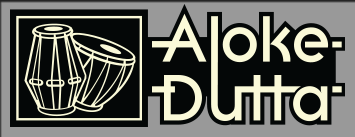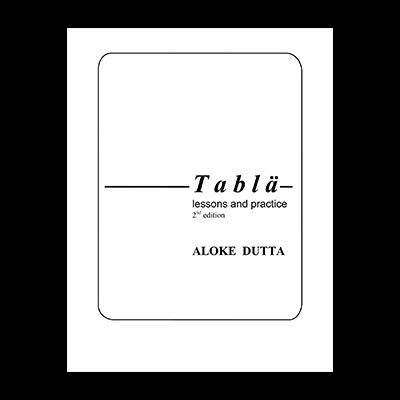Description
This book was first published in India in 1984 and sold in India, Japan, UK, and USA. Aloke never imagined that a small 84-page book would help so many students all over the world. After receiving numerous requests for a larger version, he published an enlarged 2nd edition. The third printing of the new version was published in January 2002.
This 190-page digital pdf consists of theory and compositions set to six different time cycles (tala).It begins with a “Key to Pronunciation” to help students pronounce tabla syllables and technical terms properly. After that, there is a discussion of the history of tabla, although there is a very little information available about tabla’s origin.“Tabla: An Overview” is a chapter on the present position of tabla and its players in the music world. This chapter also elaborates upon the difference between playing solo and accompaniment and guides the student towards appropriate disciplines for each.
The theory of tala, or the elements used to construct meters, is explained in “Basic Element.” This information will help students understand the ingredients required to create even meters, odd meters, and fractional meters. The names of different parts of the instrument and tuning techniques are given in “The Instrument.”
The chapter on “Sound Production” lists various single syllables, compound syllables, and flams, and their production techniques. These written explanations are enhanced by 11 photographs. There are many different kinds of tabla compositions that represent different moods or sentiments. It is necessary that students know the definitions of these compositions in order to be able to apply them musically. The “Tabla Compositions” chapter defines them.
The basic grooves played on drums are called “theka” in North India. The “Theka” chapter describes 19 different thekas that are currently being used, including two fractional meters. Some thekas are played in different ways, depending on the tempo and the speed. This information and modified fingering to achieve higher speed are clearly presented. Another valuable resource in the book is the section on the various ways in which tihais are composed.
Before introducing compositions, Aloke has written out some unique exercises with numbers instead of tabla notes. These patterns are to be recited with hand claps. The recitation develops the student’s sense of tempo and rhythm. There are six schools of tabla playing, called gharana. The final chapter, “Gharana and Tradition,” deals with each gharana and focuses on the duties and responsibilities of students as well as gurus. The six separate genealogical charts list the names of some important tabla maestros. This book covers six talas (time cycles). These are: tintala, 16 beats (4+4+4+4); jhaptala, 10 beats (5+5); rupaktala, 7 beats (3+2+2); ektala, 12 beats (2+2+2+2+2+2); kaharbatala, 8 beats (4+4); and dadratala, 6 beats (3+3). All 115 pages are loaded with fascinating compositions that are good for beginning and intermediate students. All the theme variations are expanded and noted in an easy-to-understand notational system. The accompanying CD can be ordered separately. It is approximately 60 minutes long, selected compositions from the book are demonstrated.

 Aloke Dutta
Aloke Dutta

